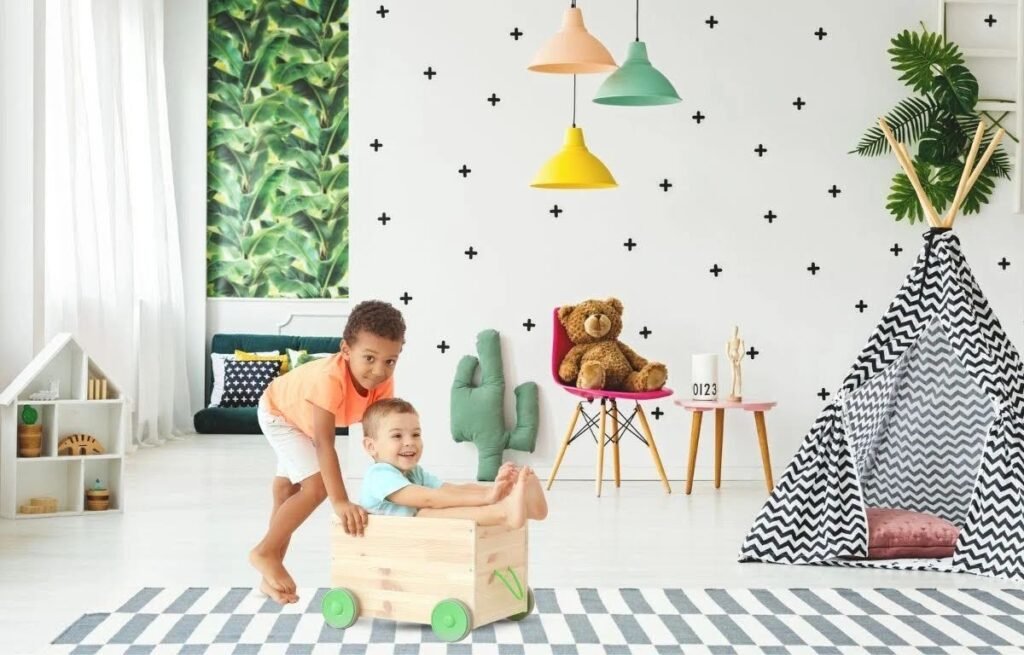Creating a fun playroom doesn’t have to be expensive. Many parents think they need expensive toys and fancy furniture to make their kids happy. That’s not true.
You’re probably looking at your empty room or messy space, wondering how to transform it without spending a fortune. We get it. Kids outgrow things fast, and budgets are tight.
This article presents practical playroom ideas that work. We’ll cover innovative storage solutions under $50, DIY projects using items you already own, budget-friendly furniture that grows with your child, and creative wall ideas that cost almost nothing.
Here’s the truth: I’ve helped dozens of families create amazing playrooms on a shoestring budget. These aren’t Pinterest-perfect rooms that look good but don’t function. These are real solutions for real families.
You’ll walk away with specific steps to build a playroom your kids will love – without breaking the bank.
The Budget-Smart Planning Process
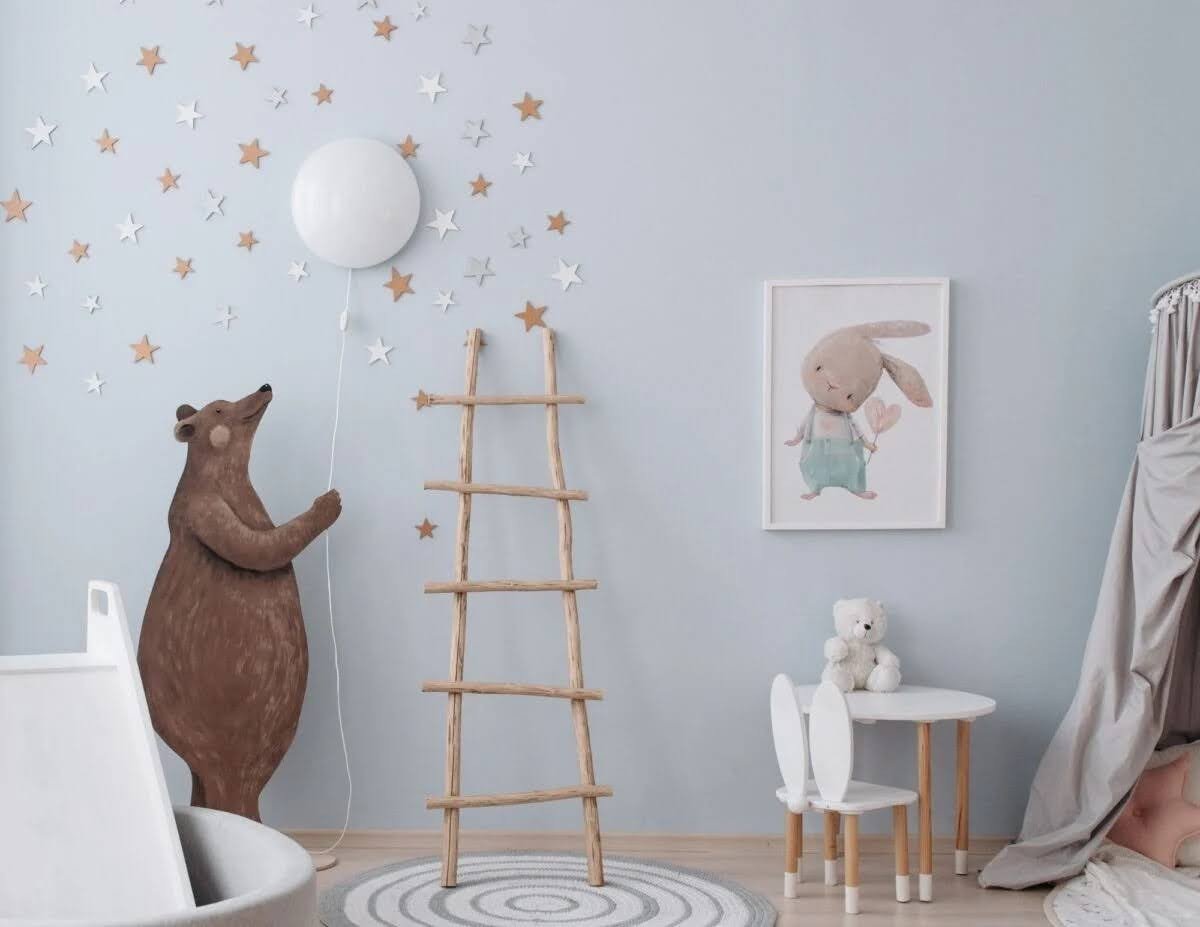
Smart Space Assessment and Budget Setting
Look around your house right now. I bet you have at least one space that’s not being used well.
Shared spaces that work perfectly:
- That corner in the living room where mail piles up
- The spare bedroom became a storage dump
- Under the stairs (if it’s tall enough)
- Part of a basement or garage
- Even a wide hallway can work
Here’s what I tell every parent: Start with $0. Seriously.
You don’t need money to begin. You need a plan.
Set your budget in stages:
- Phase 1: Free makeover using what you own
- Phase 2: $25-50 for basic storage
- Phase 3: $100-200 for furniture (only if needed)
Priority order that works:
- Clear the space completely
- Add basic storage
- Create defined play zones
- Buy new items last
Most parents do this backwards. They shop first, then try to make things fit.
The Money-Saving Declutter Strategy
Timing is everything. I recommend two major cleanouts per year.
October/November cleanout: This occurs before the Christmas rush begins. Your kids will get new toys, so old ones need to go. Trust me on this timing.
Spring/summer cleanout: Kids have grown. Clothes don’t fit. Toys seem babyish now.
My four-box system works every time:
Box 1: Keep
- Items used in the last month
- Favourites that still fit/work
- Things with sentimental value
Box 2: Donate
- Good condition items you never use
- Clothes that still fit but aren’t favourites
- Books your kids have outgrown
Box 3: Sell
- High-value items in great shape
- Designer clothes and shoes
- Popular toys and games
Box 4: Toss
- Broken items you can’t fix
- Stained or worn-out clothes
- Toys missing pieces
Getting kids involved (without the drama):
Ages 3-6: Make it a game. “Can you find five toys you don’t play with anymore?”
Ages 7-12: Give them ownership. “You can keep 10 stuffed animals. Which ones are most special?”
Ages 13+: Let them handle their stuff. Set a deadline and check progress.
Here’s the secret: Don’t let them see the donate pile after it’s sorted. Out of sight, out of mind.
The money you make from selling can fund your playroom project. I’ve seen families earn $200-$ 500 from one good cleanout.
Budget-Friendly Shopping Strategies That Work
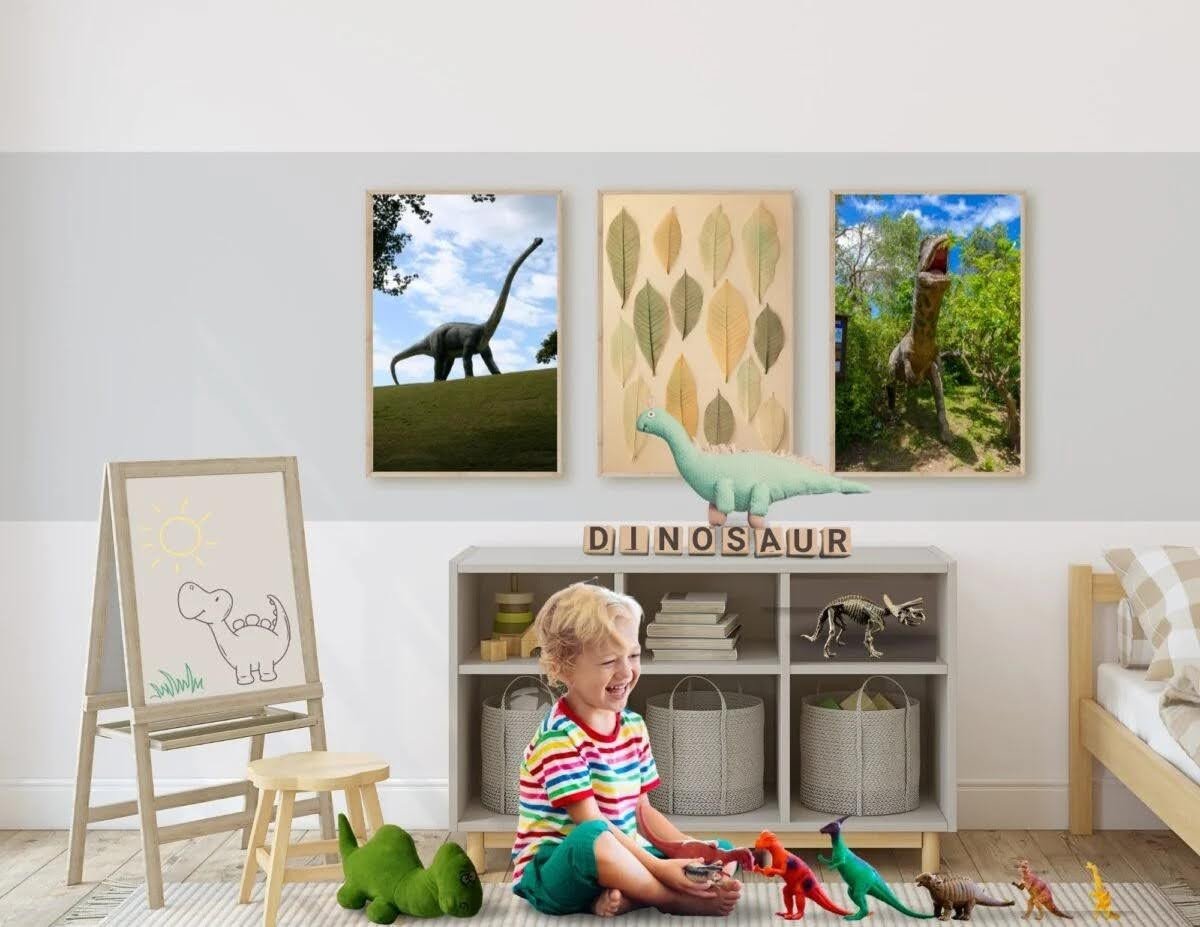
Low-Cost Sourcing Strategies
Start in your own house. I’m serious about this.
Walk through every room with fresh eyes. That old bookshelf in the garage? Perfect toy storage. The dining chair with a wobbly leg? Sand it down and make it a reading chair.
Items I find in most homes:
- Old dressers (great for art supplies)
- Wooden crates or boxes
- Picture frames of all sizes
- Baskets gathering dust
- Small tables nobody uses
Paint changes everything. A $4 can of spray paint turns junk into treasure.
I painted my daughter’s old nightstand bright yellow. Now, it’s her art station. Cost: $4.
Online marketplaces are goldmines if you know what to look for.
My search terms that work:
- “Kids furniture”
- “Playroom”
- “Toy storage”
- “Moving sale”
- “Daycare closing”
Set up alerts for these terms. Good deals go fast.
Free section strategy: Check daily. People give away amazing stuff when they’re moving.
Thrift stores offer the best value for playroom essentials.
My best finds:
- Art easel for $8 (retails for $60)
- Small table and chairs for $15
- Wooden toy chest for $12
Shop on weekdays when new donations arrive.
Goodwill rotates stock constantly. What’s not there Monday might be there Wednesday.
My weekly sourcing routine:
- Monday: Check Facebook Marketplace
- Wednesday: Hit Goodwill
- Saturday: Estate sales and garage sales
Facebook Marketplace furniture deals require patience, but pay off.
I found cube storage organizers for $30 each. Target sells them for $80.
Estate sales in the final hours often have free boxes. I’ve found puzzles, books, and small furniture this way.
End-of-season clearance is when I stock up for next year.
Best clearance times:
- January: Christmas decorations (used for play decorations)
- March: Winter clothes (dress-up clothes)
- August: Summer outdoor toys
- October: Back-to-school organizers
Here’s what most parents miss: Buy organizational stuff in January when everyone’s decluttering. Stores need to move inventory fast.
My clearance rule: If it’s 70% off or more and I can use it within a year, I buy it.
Storage cubes, baskets, and bins never go bad. Stock up when prices drop.
Discount Store Goldmines
Dollar stores are my secret weapon.
Forget the toy aisle. Head straight to storage and organization.
My Dollar Store must-haves:
- Plastic bins in matching colours
- Small baskets for tiny toys
- Drawer organizers for craft supplies
- Cleaning caddies (perfect for art supplies)
Pro tip: Buy everything in the same colour family. It looks intentional, not cheap.
School supply sections work year-round, not just in August.
What I always grab:
- Clear pouches for game pieces
- Pencil cases for crayons
- Small storage drawers
- Cork boards and bulletin boards
Hobby Lobby clearance happens every week. Their regular prices are high, but clearance is incredible.
I bought six frames for a total of $12. Originally $89. Check their website before you go.
Walmart’s home section has cheap basics that work perfectly.
Those $12 curtain multipacks? I use them as play tent walls. Kids love it.
Creating Functional Zones Without Breaking the Bank
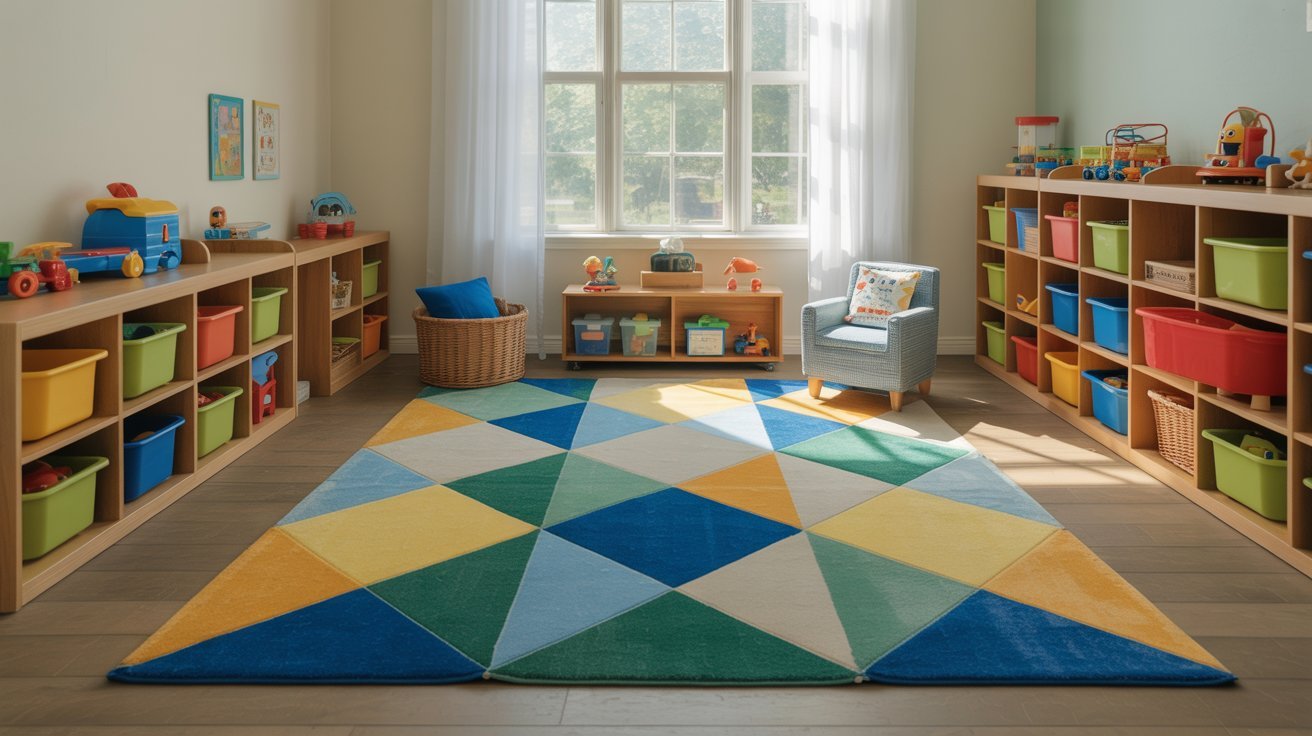
Reading Corner for Under $50
Every playroom needs a quiet spot.
You don’t need fancy furniture. You need comfort and books that kids can reach.
Floor cushions beat expensive chairs every time.
I bought four large cushions for $32 at Big Lots. Kids pile them up, spread them out, and build forts with them. Try doing that with a $200 reading chair.
Small plastic chairs work great for kids who prefer sitting up.
Dollar General sells them for $8 each. Lightweight, easy to move, easy to clean.
Book storage that works:
Those IKEA spice racks I mentioned? Mount 3-4 of them at kid height. Books are placed face forward so that kids can see the covers.
Total cost: $16. It’s way better than those expensive book displays that cost $80.
Lighting doesn’t require new purchases.
Move a lamp from another room. Floor lamps work better than overhead lights for reading corners. Softer, more comfortable.
Pro tip: Use a lamp you already own-no need to buy new.
Arts and Crafts Station on a Budget
Group like items together. This changes everything.
Instead of individual crayon boxes, put all crayons in one big container. All markers together. All glue sticks together.
Kids find what they need faster. You spend less time organizing.
My grouping system:
- Drawing supplies in one bin
- Cutting supplies in another
- Glueing supplies in a third
- Paper in a fourth
Closet space holds the messy overflow.
I keep extra supplies in plastic drawers inside a closet. Kids can’t see the chaos, but I can restock easily.
The daily bin stays out. The backup supplies stay hidden.
Repurposed containers cost nothing and work perfectly.
What I use for craft storage:
- Baby food jars for tiny items
- Coffee cans for paint brushes
- Egg cartons for sorting beads
- Ice cream containers for large supplies
Clean them well. Paint over labels if needed. Free storage that fits your space perfectly.
Here’s the secret: Buy supplies in bulk, store most away, and keep small amounts accessible.
Pretend Play Areas That Wow
Mats define play spaces without permanent changes.
I use colourful area rugs to mark different zones. Kitchen play on one mat. Building blocks on one another.
Kids naturally understand the boundaries. No explanations are needed.
Look for washable mats. Pretend cooking gets messy.
Repurposed furniture does double duty in play areas.
That old end table? Perfect height for a play kitchen counter. The drawers hold play food and dishes.
My favourite dual-purpose pieces:
- Ottoman with storage (seating + toy storage)
- Old dresser (play surface + supply storage)
- TV stand (play kitchen + hidden storage)
- Bookshelf (display + organization)
Strategic placement makes everything work better.
Put messy play near washable surfaces-art station by the hard floor, not the carpet.
Put quiet play away from active play. Reading corner in the corner, not in the middle of the room.
Put storage where kids play. Please don’t make them walk across the room to put toys away.
Here’s what most parents get wrong: They design for looks, not for how kids use space.
Watch your kids play for a week. Then, arrange the room to match their natural patterns. It’s way more effective than Pinterest-perfect setups.
Real-World Budget Success Stories
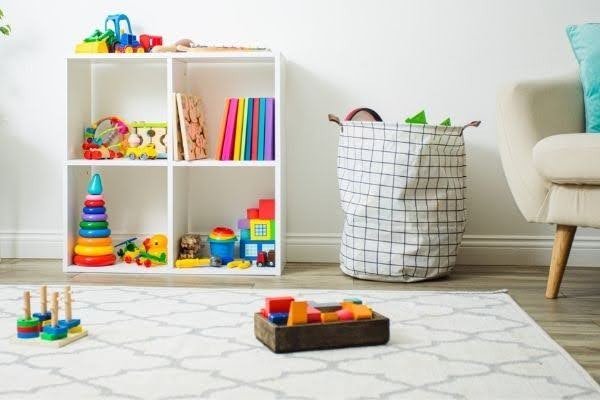
Budget Breakdown Examples
Maria’s complete playroom makeover: $87
Her 8×10 spare bedroom needed everything. Here’s exactly what she spent:
Storage solutions: $38
- Cube organizer from Facebook Marketplace: $30
- Four fabric bins from Dollar Tree: $8
Art supplies: $23
- Easel from Salvation Army: $8
- Magnetic board from Walmart clearance: $7
- Art supply caddy from Dollar Tree: $4
- Construction paper pack: $4
Decor and comfort: $26
- Area rug from thrift store: $12
- Floor cushions (2) from Big Lots: $14
Total: $87
The room went from empty to amazing in one weekend.
Kids use every single item we buy. Nothing sits unused.
Jake’s reading corner transformation: $31
His mom wanted a cosy spot in their living room corner.
What they bought:
- IKEA spice racks (3) for books: $12
- Floor cushion from Five Below: $10
- String lights from Dollar Tree: $3
- Picture frames (4) from thrift store: $6
Total: $31
The corner went from ignored to a favourite spot in the house.
Room-by-room cost analysis:
Small playroom (under 100 sq ft): $50-75. Focus on storage and one fun element. Skip furniture. Use floor seating.
Medium playroom (100-200 sq ft): $75-125. Add more zones. One storage system. One activity station. Basic seating.
Large playroom (200+ sq ft): $100-200. Multiple zones are possible. More storage is needed. Consider bigger furniture pieces.
Maximum impact strategies that work:
Spend 60% on storage. Kids need places for their stuff. Pretty rooms fall apart without good storage.
Spend 30% on comfort. Soft places to sit and play. Rugs, cushions, and good lighting.
Spend 10% on decor. Wall art, fun colours, special touches. This comes last, not first.
Most parents flip this backwards. They buy cute stuff first, then wonder why the room doesn’t work.
Start with a function. Add it later.
Maintaining Your Budget Long-Term
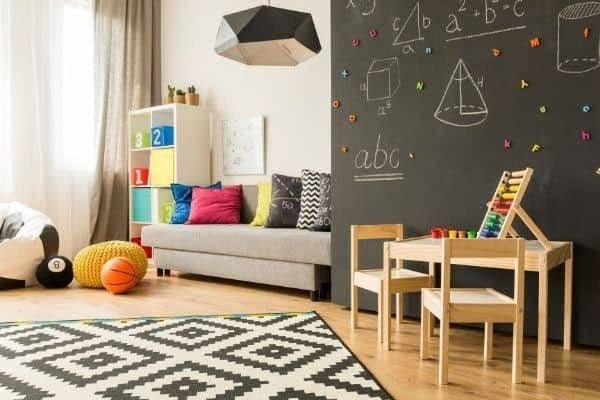
Low-Cost Maintenance Systems
Picture labels save your sanity forever.
Take photos of what goes in each bin. Tape them to the front. Even 3-year-olds can clean up independently.
No more “Where does this go?” questions every five minutes.
Easy-access storage means kids use it.
My storage rules:
- Everything is at the kid’s height
- Bins that they can lift when full
- Lids that open easily
- Clear containers when possible
If kids can’t reach it or open it, they won’t use it. It’s as simple as that.
Toy rotation changes everything about how much stuff you need.
Keep half the toys in bins upstairs. Switch them out every two weeks.
Kids think they’re getting new toys. You’re just moving the same stuff around.
My rotation system:
- Monday: Bring down “new” toys
- Put away toys that haven’t been touched
- It takes 10 minutes and feels like Christmas
Teaching independence reduces your daily work.
Show kids the system once. Then, could you step back and let them use it?
Don’t fix their mistakes immediately. Let them figure out what works.
Independent kids mean less work for you long-term.
Growing With Your Budget
Start with one small corner. Don’t try to do everything at once.
I always recommend the reading corner first. Easy to create. Kids use it immediately. Builds confidence for bigger projects.
My corner-by-corner approach:
- Week 1: Reading Corner
- Week 3: Art supplies organization
- Week 5: Toy storage system
- Week 7: Dress-up area
Each success builds momentum for the next project.
Achievable wins keep you motivated when budgets are tight.
Celebrate small victories:
- Kids put books away without being asked
- Art supplies stay organized for a whole week
- No more stepping on tiny toys
These small wins add up to significant changes.
Adapting systems as kids grow doesn’t require starting over from scratch.
Picture labels work for non-readers. Word labels work for readers: same bins, different labels.
Low shelves work for toddlers. Higher shelves work for older kids: the same storage system, just at a different height.
Floor cushions work for little kids. Desk chairs work for school-age kids. Same corner, different seating.
The secret: Build flexible systems from the beginning.
Think about the next two years when you’re setting things up now.
Will this still work when my 4-year-old is 6? If not, choose something that will.
Being budget-friendly doesn’t mean being temporary. It means wise choices that last.
Here’s what I’ve learned: The best playroom systems grow with your family without significant changes.
Minor adjustments beat complete overhauls every single time.
Your kids get consistency. You get systems that work long-term.
Conclusion
Creating amazing playroom ideas on a budget isn’t about spending more money – it’s about being smarter with what you have.
You now have the tools to transform any space into a functional, fun playroom without breaking the bank. Start small, think creatively, and focus on systems that work.
Your kids don’t need expensive things to be happy. They need organized spaces where they can find and enjoy their toys.
Pick one corner and begin this weekend. You’ll be amazed at what $20 and some creativity can accomplish.
What’s your biggest playroom challenge right now? Share it in the comments below – I’d love to help you brainstorm budget-friendly solutions that work for your specific space and family.
Frequently Asked Questions
What’s the cheapest way to create a playroom on a budget?
Start with a zero-dollar makeover using items you already own. Clear a space, relocate furniture from other rooms, and use leftover paint for touch-ups. Add picture labels and organize existing toys in repurposed containers. This approach incurs no cost but yields immediate transformation.
How much should I budget for a complete playroom makeover?
Small playrooms (under 100 sq ft) need $50-75. Medium rooms require $75-125. Large spaces cost $100 to $ 200. Focus 60% on storage, 30% on comfort items, and 10% on decor. Start with free solutions first, then add purchased items gradually.
What are the best storage solutions for playroom ideas on a budget?
Dollar store plastic bins with picture labels, IKEA spice racks for books ($4 each), and repurposed household containers are the best options. Cube storage from Facebook Marketplace and clear stackable bins provide maximum organization without high costs.
How can I make a playroom look expensive without spending much money?
Use one bright accent colour with neutral backgrounds, add string lights for ambience, and display children’s artwork in matching frames. Paint existing furniture to match your colour scheme. Strategic placement and good organization create an expensive look affordably.
Where should I start if I have a tiny budget for playroom ideas?
Begin with one corner and focus on decluttering first. Create a simple reading nook with floor cushions and organized book storage-Utilise toy rotation systems to maximise the use of existing toys. Build momentum with small wins before tackling large projects.

